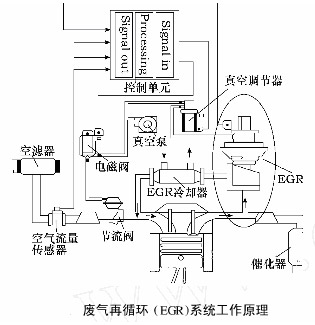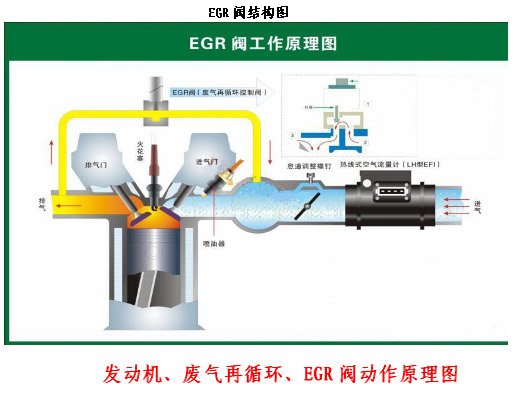| function of EGR valve
Vacuum bump always runs with the engine operation, ECU controls the opening of solenoid valve and adjust the vacumm regulator to control the operation of EGR Valve according to the engine speed, load (throttle opening), inlet gas temperature, inlet gas flow, inlet tube pressure and outlet temperature etc. It brings partial exhaust gas return to inlet system through EGR valve and take part in burning with the mixed gas in the cylinder.
If over much exhaust gas involve in recirculation, it will affect the ignition point of the mixed air, so ECU should control the exhaust gas from recirculation while engine is in idle speed, low speed, little load or cold engine status to avoid the effect of engine performance.
Usually EGR valve open at the following conditions:
1. Warm engine in operation 2. Engine speed is higher than idle speed
The Vacuum tube in the upper diaphragm of EGR valve is connected to outer vacuum solenoid, EGR valve is closed when the diaphragm lies on the normal position. The command signal from ECU controls vacuum solenoid to form the vacuum, when the vacuum source supplies enough vacuum, the vacuum in the diaphragm chamber overcomes the spring force between diaphragm and head cover, and make diaphragm lift to lift the valve poppet and open the EGR valve. When vacuum source stops the vacuum, the diaphragm resets and moves the valve poppet down to close the EGR by the spring force. It controls the ratio of EGR valve in real time and makes engine emission meet the standard without performance effect. The flow of EGR valve adjusts automatically with the increase of vacuum degree. (the ratio of EGR valve= EGR gas volume °¬£®absorbed gas£ęEGR gas volume£©°Ń100%) 

Engine, EGR, EGR valve operation principle diagram |




